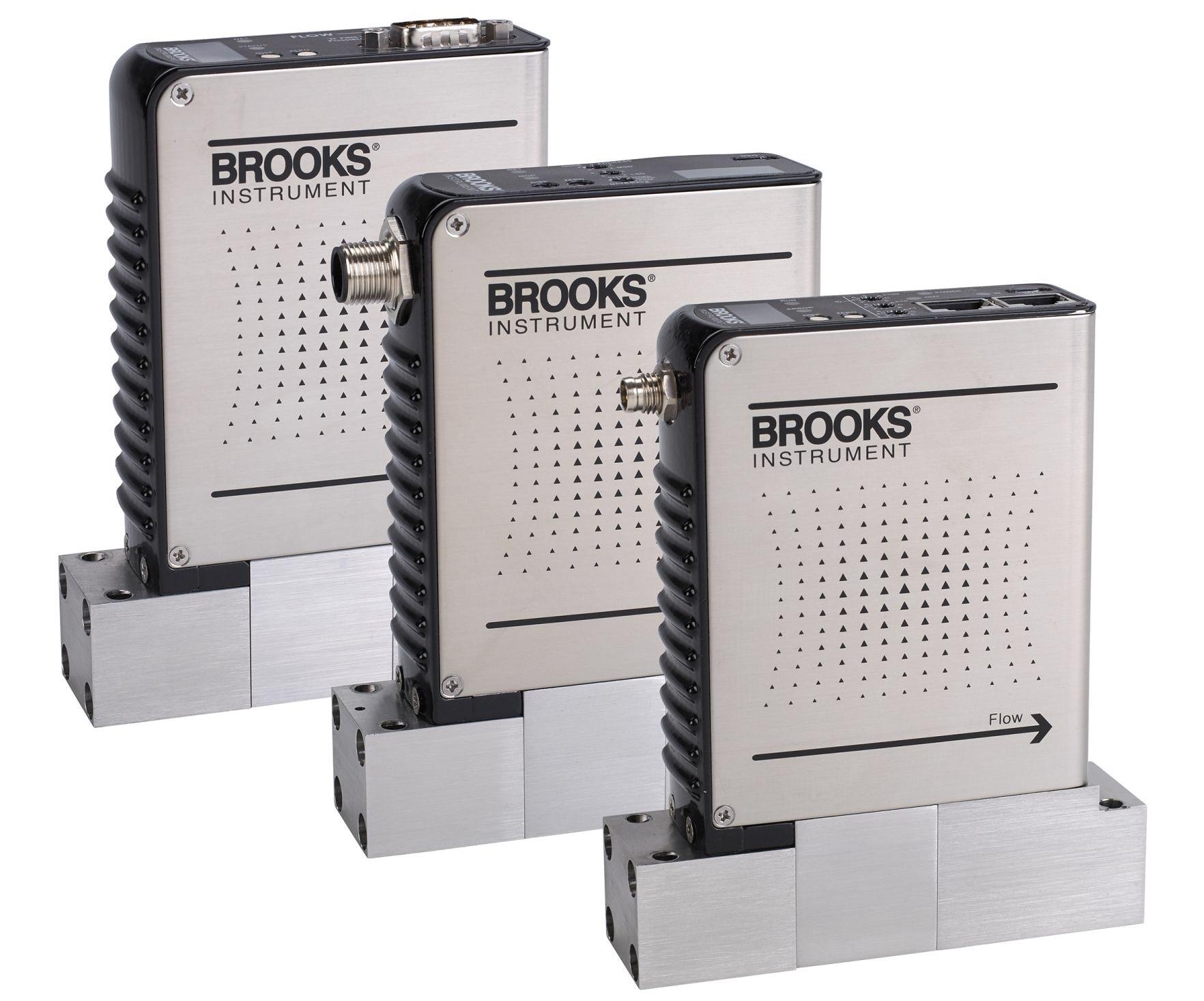Brooks Instrument, a leader in precision fluid measurement and control technology, has released the new GP200 Series, the first fully pressure-insensitive pressure-based mass flow controller (P-MFC) designed specifically for etch and chemical vapor deposition (CVD) processes in semiconductor manufacturing.

Image Credit: Brooks Instrument
Mass flow controllers (MFCs) are the most important component in the gas delivery systems used to produce silicon wafers. MFCs must precisely deliver inert, corrosive and reactive gases to the process chamber, even when operating at very low vapor pressures.
The GP200 Series P-MFC operates well in high-vacuum conditions and above atmospheric pressure conditions that are intrinsic to etch and CVD processes. In comparison, conventional discrete P-MFCs can operate under high-vacuum conditions but degrade in performance and control range as the outlet pressures increase. By offering a greater operating range than conventional P-MFCs, the GP200 Series can improve etch process performance and expand the application scope to include CVD processes.
Historically, thermal MFCs have been more heavily used in semiconductor manufacturing gas delivery systems; however, pressure-based MFCs are growing in popularity, as they provide significant advantages. We specifically designed our pressure-insensitive GP200 Series to optimize etch and CVD processes with highly precise, repeatable gas delivery.
Dr. Mohamed Saleem, Chief Technology Officer, Brooks Instrument
The GP200 Series unit features a patented architecture that overcomes the limitations of conventional P-MFCs to provide the most precise process gas delivery even when delivering low vapor pressure process gases. It includes several unique design aspects, including:
Integrated Differential Pressure Sensor
The GP200 Series uses an integrated differential pressure sensor paired with an absolute pressure sensor to compute pressure drop, instead of using two discrete pressure sensors, typically found in conventional P-MFCs. This combination reduces measurement uncertainty from calibration issues and improves the accuracy, repeatability and drift performance in semiconductor processes.
Laminar Flow Element
The GP200 Series also features a laminar flow element designed for low pressure drop, with a differential pressure sensor that is optimally ranged. This design makes it possible to accurately measure the flow of challenging low vapor pressure process gases used in etch processes, including silicon tetrachloride, boron trichloride and hexafluorobutadiene. Whereas conventional P-MFCs require high inlet pressures to operate, the high accuracy and repeatability of the GP200 Series in all operating conditions make it suitable for both standard pressure and critical low vapor pressure gases.
Downstream Valve Architecture
By positioning the control valve downstream of the flow restrictor, the GP200 Series is essentially immune to downstream pressure fluctuations as well as upstream pressure fluctuations This enables flow delivery into pressures as high as 1200 Torr.
Ultra-Fast, Highly Repeatable Transient Response
This downstream valve architecture also enables rapid shutdown and switching of recipe set points for pulsed gas delivery. Fast response times enable tighter process control, providing precise, highly repeatable gas flow delivery with matched transient response.
As the GP200 Series supports such a broad range of process conditions, it can be used as a drop-in replacement and upgrade for many traditional P-MFCs and thermal MFCs. It reduces the complexity and cost of ownership of the gas delivery system because it eliminates the need for components such as pressure regulators and transducers.
Visit experience.brooksinstrument.com/pressure-based-mass-flow-controller-gp200 to access a data sheet, explanatory videos and a white paper detailing how the GP200 Series improves accuracy and repeatability compared to discrete pressure sensors.